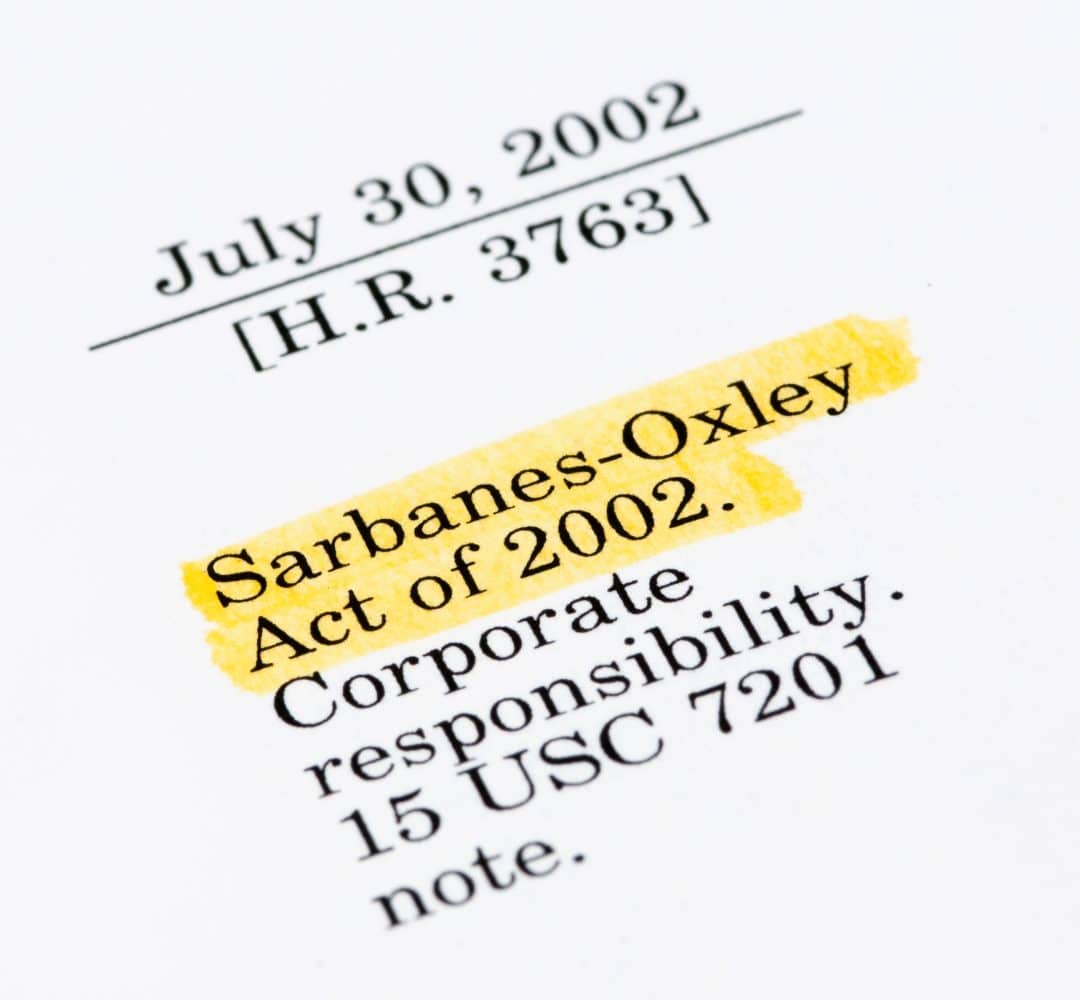SOX 404(b) provides investor value after all
Since its enactment in 2002 in response to notorious financial scandals at Enron, WorldCom, and other corporate behemoths, the Sarbanes-Oxley Act, or SOX, has been a continuing target of criticism. And probably no provision of the law has provoked more animus than Section 404(b), which requires public companies to have external auditors annually assess the adequacy of their internal controls over financial reporting.
Scorned recently by one prominent economist as “one of the most costly and counterproductive regulations ever introduced,” SOX 404(b) is now widely viewed to be in imminent peril of trimming. In the opinion of many observers, the current application of the provision to companies with public floats of $75 million or more will likely soon be narrowed to those with floats of over $250 million or even $500 million.
Yet, in the longstanding controversy over SOX 404(b), the voice of one essential constituency has been conspicuous by its absence – and, ironically, it is the very group the regulation supposedly protects, namely the investment community. Whether 404(b) is of value to investors or a mere irrelevancy has remained unclear.
Now the January issue of the American Accounting Association journal The Accounting Review includes the first study which has as its primary purpose the gauging of investor demand for internal-control (IC) audits. Exploiting a rule that enables companies to exclude for one year IC audits of firms they have newly acquired, the paper reveals a significant drop in the acquirer’s stock on the day the exclusion becomes public with the issuance of the company annual report.
In the words of the study, by Bobby Carnes of the University of Florida Warrington College of Business, Dane M. Christensen of the University of Oregon, and Phillip T. Lamoreaux of Arizona State University, “Companies that exclude acquired operations from the internal control audit experience negative and statistically significant abnormal returns on the day the opt-out decision is revealed.” The professors add that, depending on how this decline is calculated, there can be as much as a 44 basis-point difference in one-day abnormal returns between opt-out and opt-in companies.
Whether investors would “demand, or value, internal control audits for large companies if they were voluntary,” they write, “is a particularly important question given that politicians and regulators have begun to question the merits of these audits… Overall, our results are consistent with investors’ valuing (i.e. demanding) internal control audits for large U.S. companies in a setting where internal control audits are voluntary.“
This discovery has been late in coming, the professors write, “because internal control audits were imposed by regulation in the U.S…at the same time, making it hard to find a valid counterfactual.” As a result, research into this question has generally focused on relatively small firms just above and below the $75 million lower limit for mandatory IC audits. In contrast, the one-year exemption in IC audits of acquired operations, they explain, permits comparisons to be made among the full range of firms with a more than $75-million public float, a group that represents 99% of total U.S. market capitalization.
To further probe the importance investors attach to IC audits, the researchers investigate how the market reacts to opting-out in a variety of circumstances that might affect that response. For example, they find that the stock-price dip occasioned by opting-out becomes more pronounced the greater the size of the acquisition relative to the size of the acquirer, as would be expected if investors value an auditor’s internal control assurance. They also find a more negative effect if an acquisition occurs in the first half of a buyer’s fiscal year than if transacted in the second half, suggesting that opting-out becomes more suspect to investors the more time acquirers have to integrate the finances of the two companies.
In an additional test of investor sentiment, the professors probe the effect of an accounting standard (AS5) that was implemented by the U.S. Public Company Accounting Oversight Board (PCAOB) in 2007 to lower the cost of IC audits. “As expected,” the professors write, “we find that companies are less likely to opt-out of internal control audits…and abnormal [stock-price] returns are more negative for those companies that do opt-out…Thus, investors appear to have higher demand for assurance on internal control quality as the cost of the assurance declines.”
Are investors justified in taking a dim view of opt-outs? In a word, yes. Companies that choose this option, the study reveals, are more likely than those that opt-in to misstate their finances in the post-acquisition year, which suggests, in the words of the study, that “investors’ reactions to opt-out disclosures are not misguided.”
In addition, the authors take note of other recent research that, like their own, exploits the post-acquisition exemption from 404(b) and concludes that opt-out firms not only have an increased likelihood of misstating their finances but also do worse than opt-ins with respect to future returns on assets and short- and long-term stock performance. “Taken together,” the professors write, “both studies suggest that investors perceive value in the internal control audit and [that] the decision to opt-out can convey information to investors.”
The new paper’s findings are based on an analysis of 1,803 acquisitions by 925 companies over a nine-year period. An acquisition is included in the sample if the purchaser is a U.S. company subject to SOX 404(b), is audited by a Big-4 accounting firm, and bought 100% ownership of the target. Targets, for their part, have market capitalizations at least 1% of their acquirers’ and must be large enough on their own to be subject to 404(b). Purchasers had, on average, market capitalizations of $10.1 billion, and the average size of their acquisitions was $1 billion.
In all cases, whether or not purchasers availed themselves of an exemption to 404(b), as they did in 35% of the acquisitions, became public knowledge with the companies’ submission of 10-K forms (that is, their annual reports) to the SEC. As part of their effort to assure that the market’s same-day response to the 10-K reflected firms’ opting or not opting for the acquisition exemption (and was not due to some other factor), the professors restricted their sample to companies that issued their 10-Ks a minimum of two days (and in many cases quite a bit more) after their earnings announcements.
In sum, the professors see their research as “informative to policy-makers,” noting that, “aside from the PCAOB’s recent focus and inspection efforts on internal control audits, regulators have continually reduced the scope and extent of mandated internal control audits. Our results suggest that future reductions…may be viewed negatively by investors.”
The study, entitled “Investor Demand for Internal Control Audits of Large U.S. Companies: Evidence from a Regulatory Exemption for M&A Transactions,” is in the January issue of The Accounting Review, a peer-reviewed journal published six times yearly by the American Accounting Association, a worldwide organization devoted to excellence in accounting education, research, and practice. Other journals published by the AAA and its specialty sections include Auditing: A Journal of Practice and Theory, Accounting Horizons, Issues in Accounting Education, Behavioral Research in Accounting, Journal of Management Accounting Research, Journal of Information Systems, Journal of Financial Reporting, The Journal of the American Taxation Association, and Journal of Forensic Accounting Research.
Read more about this research in CFO Magazine about the results of the first study with the primary purpose of gauging investor demand for internal controls audits.




